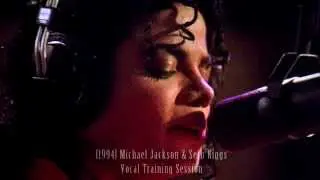Uncategorized
Types of Singing Techniques
Types of Singing Techniques
In the past, before big venues appeared, singing was easy. There were many bards who could sing for many hours without damaging their voices. They would usually perform for a limited audience in an inn or on the streets. They didn’t need to support their natural voices and abilities.
Everyone could hear it, the melodies were repetitive as they were written by the bards and dedicated to their voices. It is worth noticing that nobody would consider classifying voices regarding their range as free singing was giving people this comfort of using their chest and falsetto.
At some point, we could see a great increase in the number of instruments accompanying the vocalist. First, there were duets, then chamber bands and finally orchestras. Singers weren’t able to be audible anymore. People started hiring choirs but who would sing the solos? That is how a singing technique evolved.
People started thinking: What can we do to make the voice being strong and audible? How to teach voice virtuosos?
This is the time when we discover the diaphragm, “masque” and all those terms that classically taught students to learn when they attend their classes. This is also the time when the vocal range decreases – people would stick to their strongest ranges and that is how we started classifying voices as sopranos, altos, tenors, baritones, basses etc. At that time, bel canto vocal technique appears. It is still popular nowadays.
After many years of being taught bel canto, I started doing research on different singing methods as I have been always more interested in pop singing than classical singing (note – I still appreciate classical singing and I do sing classically! The italian tenors are a huge inspiration always !).
I found an article about Speech Level Singing method set by Seth Riggs. There was one, very impressive thing – the list of his students – Michael Jackson, Whoopi Goldberg, Stevie Wonder, Tina Turner, Cher, Celine Dion, Barbra Streisand, Amy Lee, Samuel L. Jackson… to name a few.
The technique requires you to focus on the way you speak and then make the notes longer so you turn them into singing. In its roots, it totally disregarded the diaphragm role in singing as well as all the other features that “classical” singing was taking into consideration.
At that time, it was a revolution. My first SLS singing lesson was when I was 15 and I remember using my all pocket money and savings to pay for my 30-minute session with a certified SLS singing tutor. The only thing I was supposed to focus on was the connection of my vocal cords. What was also fascinating, the founder claimed that everyone can sing in any range.
https://www.youtube.com/watch?v=PjETXaGWPOY
At some point, another technique appears – Complete Vocal Technique that is taught in an institute in Copenhagen. The foundations of the technique were set by Cathrine Sadolin. The technique sets four important features – “three basic principles”, four singing modes (they allow the singer to manipulate their voice to achieve different results): neutral, curbing, overdrive and edge; sound colour and effects.
https://www.youtube.com/watch?v=VS75BjKSO7g
These three singing methods set the path to other singing techniques. Nowadays, as more research has been made, more and more singing schools appear (also, let’s be honest – it’s good money). Natural Voice Technique, IVTOM etc. They are less restrictive than SLS and they try to combine the legacy of bel canto with the newest knowledge.
In my personal opinion, the best singing technique is the one that you find yourself. That is why learning how to sing is an intimate process. You have to discover your body and learn which parts of your body support your singing and which prevent you from singing in a relaxed, healthy way.
Learn more about how to choose the best song list for your performance.
Types of Singing Techniques
#singinglessons #singingteacherslondon #musiclessonslondon #musicteachers

